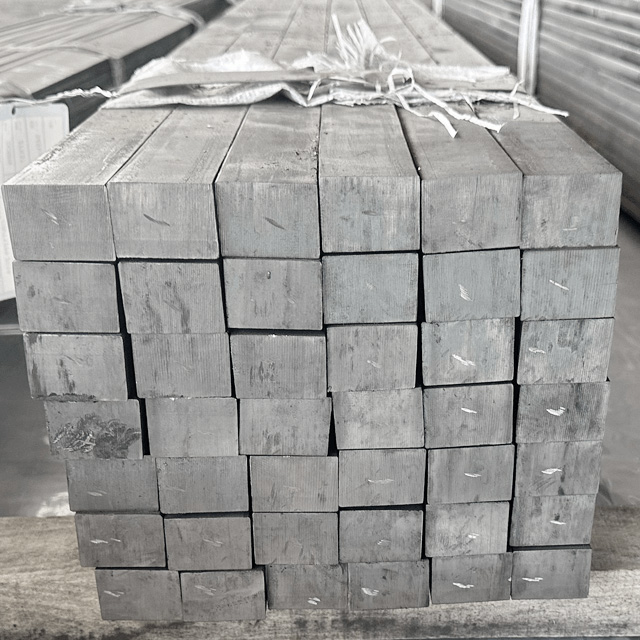English
- All
- Product Name
- Product Keyword
- Product Model
- Product Summary
- Product Description
- Multi Field Search
Views: 0 Author: Site Editor Publish Time: 2025-03-20 Origin: Site









Zhongjian pride ourselves on delivering high-quality steel solutions tailored to meet the diverse needs of our clients across various industries. From construction and automotive to shipbuilding and beyond, our commitment to excellence is driven by a deep understanding of the materials that form the backbone of these sectors. Two such materials—flat bars and steel plates—are often at the heart of many projects. While both are essential forms of steel, they differ significantly in shape, size, applications, and manufacturing processes. In this article, we'll explore these differences in detail, providing a comprehensive guide to help you choose the right material for your specific needs.

The fundamental characteristics of flat bars and steel plates are defined by their dimensions and cross-sectional profiles. These differences are not just aesthetic; they directly impact the materials' performance in various applications.Flat Bars are characterized by their elongated, rectangular cross-sections.
They are typically thin and long, with a higher width-to-thickness ratio. This makes them ideal for applications requiring flexibility and ease of installation.Steel Plates, on the other hand, are thicker and more robust. Their larger thickness and balanced dimensions provide significant load-bearing capacity and structural support, making them suitable for heavy-duty applications.
The versatility of flat bars and steel plates lies in their ability to meet a wide range of industrial requirements. Understanding their applications is key to selecting the right material for your project.Flat Bars are commonly used in applications that require lightweight, yet strong, components. They are ideal for manufacturing brackets, connectors, and mechanical parts. Their thin profile also makes them suitable for creating special-shaped parts like angle iron and flat iron.Steel Plates are designed for heavy-duty applications where strength and load-bearing capacity are paramount. They are widely used in shipbuilding, bridge construction, automotive parts, and large-scale building structures. Their thickness and robustness make them the go-to choice for projects requiring significant structural support.
The manufacturing processes for flat bars and steel plates are tailored to their unique characteristics. Both materials are produced through rolling processes, but the specifics differ based on their intended use.Flat Bars are typically manufactured through hot rolling or cold rolling. The process involves heating a steel billet and then rolling it into the desired rectangular shape. Cold rolling can further enhance the surface finish and dimensional accuracy, making flat bars suitable for applications requiring precision.Steel Plates are produced using larger rolling equipment designed to handle their substantial thickness. The process involves heating the steel billet and then rolling it into the required thickness and size. Mechanical pressing ensures uniformity, while cutting to specification allows for precise dimensions. This process results in a material that is robust and capable of withstanding heavy loads.
Both flat bars and steel plates can be made from various steel materials, including carbon steel, stainless steel, and high-strength alloys. The choice of material depends on factors such as corrosion resistance, strength, and durability. However, their different shapes and sizes mean that they exhibit distinct mechanical properties.Flat Bars are known for their flexibility and ease of handling. Their thin profile makes them suitable for applications that require bending or shaping. They are lightweight, which simplifies installation and integration into various structures.Steel Plates offer superior strength and load-bearing capacity. Their thicker profile makes them more rigid and less prone to deformation under heavy loads. This makes them ideal for applications where structural integrity is crucial.
To provide a clear and concise comparison of flat bars and steel plates, we have summarized their key differences in the table below:
| Characteristic | Flat Bar | Steel Plate |
|---|---|---|
| Shape and Size | Thin, elongated, rectangular cross-section; higher width-to-thickness ratio | Thick, robust, rectangular cross-section; balanced dimensions; lower width-to-thickness ratio |
| Applications | Brackets, connectors, mechanical parts, special-shaped parts (e.g., angle iron) | Shipbuilding, bridge construction, automotive parts, building structures, containers |
| Manufacturing Process | Hot rolling or cold rolling; optional cold drawing for precision | Hot rolling or cold rolling; mechanical pressing; cutting to specification |
| Material Properties | Flexible, lightweight, suitable for bending and shaping | High strength, load-bearing capacity, rigid, less prone to deformation |
| Strength and Load-Bearing | Medium strength; lower load-bearing capacity | High strength; high load-bearing capacity |
| Ease of Installation | Lightweight and easy to handle | Heavier; requires more robust handling and installation |
Choosing between a flat bar and a steel plate depends on the specific requirements of your project. Flat bars offer flexibility and ease of installation, making them ideal for applications that require lightweight components. Steel plates, with their superior strength and load-bearing capacity, are perfect for heavy-duty projects where structural integrity is crucial. At Zhongjian, we understand the importance of selecting the right material. Our commitment to quality and innovation ensures that you have access to the best solutions for your needs. Whether you need the versatility of a flat bar or the robustness of a steel plate, Zhongjian is here to support your project from start to finish.